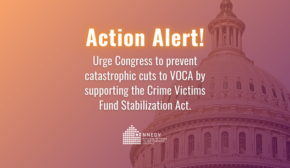Institutions That Minimize Abuse Share the Blame
August 4, 2014
This article also appeared on the Huffington Post.
August 4, 2014 – In February, a hotel lobby camera recorded the aftermath of violence that is normally confined to the four walls of a home. In the video, football player Ray Rice dragged an unconscious woman, face down, out of an elevator. That woman was his fiancée, and he had just knocked her unconscious.
The NFL responded with a tap on the wrist and the tried-but-not-so-true response of deflecting, glossing over, and minimizing. Sports commentators and pundits pondered the victim’s role in “provoking” the attack. I’m wondering what anyone might do to provoke being beaten unconscious…
It has been refreshing to hear the collective groans and gasps of those paying attention, from professional sports writers to teens on Facebook. In general, people are appalled at the obscenely lax punishment (a two-game suspension) meted out for this serious assault. The comparisons to the league’s harsher punishment for other offenses, including four-game suspensions (and more) for substance abuse and Michael Vick’s indefinite ban for dogfighting, were astute and on point. The public reaction to the EPSN reporter’s victim-blaming ramble was so intense that ESPN suspended him briefly.
But the insular and protective response of the NFL is alarmingly typical of institutions facing the violent and abusive actions of their beloved, their stars, and their powerful. Whether it is the Catholic Church covering up child abuse for decades, Penn State turning a blind eye to rape in its locker room, or universities failing to address dating violence and sexual assault — many institutions have favored PR cover-ups rather than serious investigation and action.
It’s time for our institutions to scrap their crisis communication plans when it comes to violence against women, and replace them with real plans to protect victims and hold perpetrators accountable. Acknowledge the violence and abuse. Educate employees on violence against women. Call for investigations. Affirm that your institution is a safe place for women and an unwelcoming place for abusers.
The protection offered to perpetrators in institutions is bolstered by our culture of victim-blaming. Earlier this summer, the Washington Post published and then defended George Will’s column saying that women in college claim to be rape victims to receive the “coveted” sexual assault “privilege.” These victim-blaming opinions are amplified and legitimized by his syndicated column, and there was no ESPN to suspend him — not even for a week.
Abuse and violence are not one-time occurrences. They are not “mistakes,” “misunderstandings,” “things that got out of hand” or any other tired, lazy excuse. Institutions can either send a message by holding perpetrators accountable to the institution’s fullest capacity, and supporting the survivors in their safety and recovery, or they can continue to be forever vigilant for the next shameful episode that threatens their reputations, their brand and their bottom lines. Institutions that are quick to defend perpetrators or blame victims are guilty of condoning violence against women.





